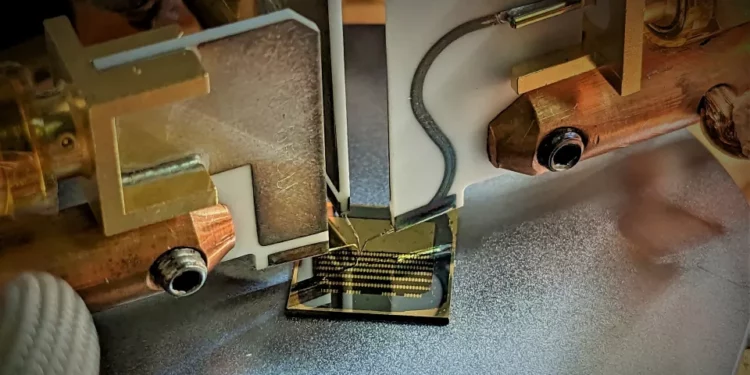Transistors that can switch properties are important in the development of tomorrow’s semiconductors. As standard transistors are approaching the limit of their size, having more work and the number of units is becoming more and more important to enable the development of small circuits that work hard for better memory and more powerful computers. Researchers at Lund University in Sweden have shown how to create new (Cutting Edge Transistors for the future semiconductors) transistors that are organized and controlled at a new and precise level.
Considering the increasing need for efficient, powerful and efficient circuits, there is great interest in adjustable transistors. The advantage of these is that, unlike standard semiconductors, it is possible to change the properties of the transistor after it is made.
Historically, the computing power and performance of computers have been improved by reducing the size of silicon transistors (also known as Moore’s Law). And now, it is reaching the point where the cost of development in these lines is increasing significantly, and the quantum of problems that have arisen is slowing down the development.
Instead, research continues for new materials, components, and circuits. Lund University is among the world leaders in III-V materials, which are an alternative to silicon. These are materials with considerable potential for the development of high-frequency technology (such as parts for future 6G and 7G networks), optical applications and increasingly energy-efficient electronic components.
Ferroelectric materials are used to realize this ability. These are special materials that can change in their polarization when exposed to an electric field. It can be compared to an ordinary magnet, but instead of a north and south magnet, an electric field is created with a positive charge and a negative charge on each side of the object. By changing the negative feedback, it is possible to control the transistor. Another advantage is that the object “remembers” its polarization, even if the current is turned off.
Using a new combination of materials, the researchers created a ferroelectric “seed” that controls the tunneling – the effect that connects electricity – to transistors. It is on a very small scale – a grain is 10 nanometers in height. By measuring the voltage or current change, it is possible to detect the change of bias in individual grains and understand how this affects the behavior of the transistor.
A recently published study investigated a new ferroelectric memory in the form of a transistor with a tunnel barrier to create a new circuit factory.
“The goal is to create neuromorphic circuits, i.e. circuits suitable for human intelligence so that their structure resembles the human brain and its synapses and neurons,” explains Anton Eriksson, who has just finished his PhD in nanoelectronics.
The peculiarity of the new results is that it is possible to create a tunnel using recently available ferroelectric seeds. These nanograins can be analyzed at the level of each individual, since it was previously possible to find the same type of all grains, which are called ensembles. In this way, it is possible to identify and control separate parts of the material.
“In order to create advanced applications, you must first understand the dynamics of individual grains down to the atomic level, as well as the defects that exist. A better understanding of the matter can be used to improve performance. By manipulating these ferroelectric particles, you can create new semiconductors in which you can change properties. By changing the voltage, we can thus achieve different functions in one part,” explains Lars-Erik Wernersson, professor of nanoelectronics.
The researchers also investigated how this knowledge can be used to create different flexible devices by using signals that pass through the transistor in different ways. It can be used, for example, for new memory cells or more energy-efficient transistors.
This new type of transistor is called a ferro-TFET and can be used in both digital and analog circuits.
“What is interesting is that it is possible to modify the input signal in different ways, for example by changing the time of the transistor, doubling the frequency and mixing the signal. As the transistor remembers its properties, even when the current is cut off, it is removed. there is no need to reset it every time the circuit is used,” explains Zhongyunshen Zho, a PhD student in nanoelectronics.
Another advantage of these transistors is that they can operate at low voltage. This makes them work efficiently, which will be needed, for example, in tomorrow’s wireless communication, the Internet of things (IoT) and quantum computers.
“I consider this to be a leading discovery at the international level. It is good that in Lund in Sweden we are leading in the field of semiconductors, especially in terms of the EU’s recent Chips regulation and – recently, which aims to strengthen the European position regarding semiconductors,” says Lars-Erik Wernersson.
Source: Lund University





































